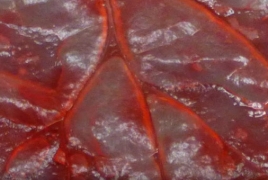
In the future, you might not have to resort to exotic materials to create heart cells -- you could just raid your grocery store's produce section. Scientists have invented a process that turns spinach leaves into farms for functioning human heart cells, Engadget said. The team started by pumping a detergent solution through the spinach, stripping it of its plant cells and turning it into a ghostly shell made mostly of cellulose. After that, they cultured heart cells on the remaining structure, sending both fluids and microscopic beads through the vegetable's now-empty veins in order to feed the new cells.
The result is a safe and potentially ideal bed for growing heart tissue. Existing approaches to generating heart cells, such as 3D printing, aren't good at replicating the extremely complex network of veins needed to grow cells -- spinach already has that. And when cellulose is bio-compatible, you don't have to worry about hostile interactions between the heart cells and their host.
As is often the case with this kind of research, it'll be a long while before this method is ready for practical use. If it pans out, though, it could lead to an affordable and eco-friendly of growing replacement tissue for heart attack patients. You could potentially apply this to other body replacements, too -- the researchers suggest that wood's structure might be helpful for generating bone. They've already applied this method to parsley, peanut hairy roots and sweet wormwood, so it's more a question of finding use cases than overcoming technical hurdles, Engadget said.

